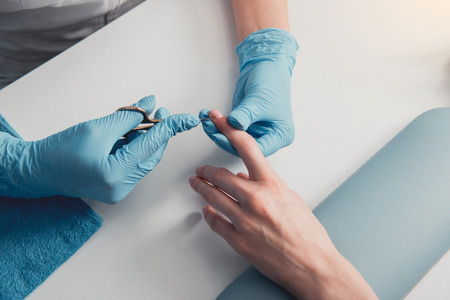Understanding Jawline Sculpting: What to Expect
Jawline sculpting has quickly become one of the most sought-after treatments in the U.S. beauty and wellness industry, thanks to its ability to deliver a chiseled and defined look without invasive surgery. Whether you’re scrolling through TikTok or flipping through the latest beauty magazines, sharp jawlines and contoured profiles are everywhere—fueling demand for these innovative cosmetic procedures. At its core, jawline sculpting refers to a range of non-surgical and minimally invasive techniques designed to enhance the shape and definition of the lower face. Popular options include injectable fillers, neurotoxins like Botox, and energy-based devices such as radiofrequency or ultrasound treatments. These methods can smooth out jowls, add volume where needed, and create a more balanced facial appearance. As more Americans seek subtle yet impactful enhancements, jawline sculpting is being embraced not only by celebrities but also by everyday individuals who want to boost their confidence and refresh their look with little downtime. Understanding what to expect—from the types of procedures available to the general experience—sets the stage for exploring questions about pain, numbing, and recovery that naturally arise for anyone considering this trending treatment.
2. The Pain Factor: What Patients Actually Experience
When it comes to jawline sculpting, one of the most common questions is about pain: How much does it actually hurt? To answer this, it’s important to break down the experience based on real patient testimonials and the specific techniques used. Pain perception varies significantly depending on whether you choose injectable fillers, minimally invasive procedures like radiofrequency, or surgical contouring. Below is a detailed overview of what patients typically feel during different jawline sculpting treatments.
Patient Experiences Across Techniques
| Treatment Type | Sensation During Procedure | Reported Pain Level (1-10) | Common Patient Descriptions |
|---|---|---|---|
| Injectable Fillers (e.g., Juvederm, Restylane) | Mild pinching or pressure; occasional stinging | 2-4 | “Quick pinch,” “slight discomfort,” “tolerable” |
| Radiofrequency/Ultrasound Devices | Warmth, tingling, sometimes mild burning | 3-5 | “Deep warmth,” “like a hot stone massage” |
| Surgical Jawline Contouring | Significant pressure; soreness under anesthesia (no pain during procedure) | 6-8 (post-op) | “Tenderness,” “bruised feeling after numbing wears off” |
The Role of Individual Sensitivity and Provider Skill
Pain thresholds differ from person to person. Some patients barely notice any discomfort, while others report moderate pain even with numbing agents applied. The skill of your provider also plays a major role—experienced practitioners use advanced techniques to minimize discomfort and anxiety. Many clinics offer pre-procedure numbing creams or local anesthetic injections to make the process more comfortable.
Real Voices: What Patients Say About Jawline Sculpting Pain
- “I was nervous about the pain, but honestly, it felt like a mosquito bite and was over in seconds.” – Sarah B., Los Angeles
- “There was some soreness for a day or two after my fillers, but nothing that required medication.” – Kevin D., Chicago
- “The swelling after surgery was uncomfortable, but my doctor explained exactly what to expect, so I wasn’t surprised.” – Amanda L., Dallas
Pain Is Manageable—and Temporary
The consensus among patients is that while jawline sculpting isn’t pain-free, most people find the discomfort manageable and short-lived. Open communication with your provider about your concerns can help tailor the approach and ensure a smoother experience tailored to American standards of patient care and comfort.
![]()
3. Modern Numbing Techniques: Minimizing Discomfort
When it comes to jawline sculpting, one of the top concerns for patients is the level of discomfort they might experience during the procedure. Fortunately, American aesthetic clinics have embraced advanced numbing techniques to ensure that most clients feel little to no pain throughout their treatment.
Topical Anesthetics: The First Line of Defense
The most common approach involves applying a topical anesthetic cream directly to the treatment area. These creams, which often contain lidocaine or similar agents, are left on the skin for 20-30 minutes prior to injection or contouring. Topical anesthetics effectively numb the surface layers of the skin, making needle pricks and minor manipulations far more tolerable.
Local Injections: Targeted Pain Relief
For those with a lower pain threshold or procedures requiring deeper injections, local anesthetic injections may be used. This method involves injecting a small amount of numbing medication—again, typically lidocaine—directly into the jawline area. Within minutes, this produces more profound numbness, allowing practitioners to perform precise sculpting with minimal patient discomfort.
Combining Methods for Maximum Comfort
It’s common practice in U.S. clinics to combine topical and injectable numbing methods, especially for patients undergoing extensive reshaping or those who express anxiety about pain. Some providers may also offer distraction devices or cooling tools as additional comfort measures.
The Role of Patient Consultation
A thorough pre-procedure consultation ensures that clinicians understand each patient’s pain tolerance and previous experiences with anesthesia. This personalized approach allows providers to tailor numbing strategies to suit individual needs, resulting in a smoother and more reassuring experience for those seeking jawline enhancements.
4. Navigating Recovery: Swelling, Soreness, and Aftercare
Recovery after jawline sculpting is a crucial part of the overall experience, and understanding what to expect can help patients feel more comfortable and prepared. While pain is typically minimal due to effective numbing during the procedure, most people will experience some degree of swelling, mild bruising, and soreness in the days following treatment.
What to Expect During Recovery
Most patients find that the recovery period is straightforward, with side effects peaking within the first 48 hours and gradually subsiding over one to two weeks. Here’s a breakdown of common post-procedure symptoms and their typical timelines:
| Side Effect | Onset | Duration | Severity |
|---|---|---|---|
| Swelling | Immediate to 24 hours post-procedure | Up to 7-10 days | Mild to moderate |
| Soreness/Tenderness | Within hours after procedure | 3-7 days | Mild; manageable with OTC pain relievers |
| Bruising | Visible within 24 hours | 5-14 days (varies by individual) | Mild to moderate; may be concealed with makeup |
| Numbness | Immediately after procedure (from anesthetic) | A few hours up to 1 day | Mild; resolves as anesthetic wears off |
Tips for Managing Side Effects at Home
- Ice packs: Apply gently for 10-15 minutes at a time during the first 48 hours to reduce swelling.
- Pain management: Over-the-counter medications like acetaminophen or ibuprofen can help alleviate soreness—always follow your provider’s recommendations.
- Avoid strenuous activity: Refrain from heavy exercise or activities that increase blood flow to the face for at least 24-48 hours.
- Keep the area clean: Follow your practitioner’s aftercare instructions carefully, including gentle cleansing and avoiding unnecessary touching or pressure on the treated area.
- Stay hydrated and sleep elevated: Drinking plenty of water and sleeping with your head slightly elevated can help minimize swelling.
- No makeup: Hold off on applying makeup directly to the treated area for at least 24 hours post-procedure unless otherwise advised by your provider.
When to Call Your Provider?
If you notice signs of infection (such as increasing redness, warmth, pus, or fever), severe pain not controlled by recommended medication, or persistent numbness beyond a day or two, contact your provider promptly. Most concerns are minor and resolve quickly, but timely communication ensures your safety and peace of mind.
5. Expert Advice: Tips from U.S. Providers
When it comes to jawline sculpting, insights from board-certified cosmetic professionals across the United States can help set realistic expectations for pain and recovery. According to Dr. Melissa Green, a New York-based dermatologist, most patients report only mild discomfort during injectable treatments such as dermal fillers or neurotoxins. “We use topical numbing creams and sometimes local anesthetics to make the experience as comfortable as possible,” she explains.
Dr. Anthony Brooks, a facial plastic surgeon in Los Angeles, recommends asking your provider about the specific numbing methods they use and discussing any pain concerns beforehand. “Everyone’s pain tolerance is different, so transparency and open communication are key,” he notes. Most providers suggest scheduling procedures when you can take it easy for 24-48 hours afterward—this helps minimize swelling and allows time for any tenderness to subside.
In terms of aftercare, experts advise applying ice packs to reduce swelling and avoiding strenuous exercise or heavy makeup for at least a day post-treatment. Dr. Green emphasizes, “Follow your provider’s instructions closely—proper aftercare makes a big difference in comfort and results.”
Finally, both experts stress the importance of choosing a qualified provider with extensive experience in facial aesthetics. Not only does this lower the risk of complications, but it also ensures you receive tailored advice on managing pain and optimizing your recovery. As Dr. Brooks puts it, “A skilled injector will not only enhance your jawline but also make the process as smooth and pain-free as possible.”
6. Is Jawline Sculpting Worth It? Weighing the Pros and Cons
As jawline sculpting continues to gain popularity across the U.S., many people find themselves asking if this trending cosmetic procedure is truly worth it. To answer that, it’s crucial to take a balanced look at the results, comfort level, and the evolving demand for jawline enhancement treatments.
The Pros: Why People Love Jawline Sculpting
For many, the biggest advantage is the instant confidence boost that comes with a more defined facial profile. Non-surgical options like fillers and radiofrequency treatments offer noticeable improvements with minimal downtime, appealing to those who want subtle but impactful changes. Advances in numbing technology and practitioner expertise have also made these procedures much more comfortable than in years past—most patients describe only mild discomfort rather than pain.
The Cons: What You Should Consider
On the flip side, jawline sculpting isn’t entirely without drawbacks. Some individuals may experience swelling, bruising, or sensitivity during recovery—even when numbing agents are used. Results can vary depending on your anatomy and chosen technique, meaning not everyone will walk away with their “dream jawline.” Additionally, non-permanent solutions require ongoing maintenance sessions to keep up the look, which can add up financially over time.
A Growing Trend Driven by Demand
There’s no denying that social media influence and celebrity culture are driving more Americans to explore facial contouring options. The demand for these procedures has spurred innovation, leading to safer techniques and more natural-looking results. This trend suggests that jawline enhancement is here to stay—at least for now.
The Bottom Line: Is It Worth It?
If you’re seeking a quick confidence boost and are comfortable with some minor discomfort or brief recovery time, jawline sculpting might be a worthwhile investment. However, it’s important to weigh your expectations against possible side effects and long-term costs. Consulting with an experienced provider can help determine if this trending treatment aligns with your personal goals and comfort level as you navigate America’s ever-evolving beauty landscape.

